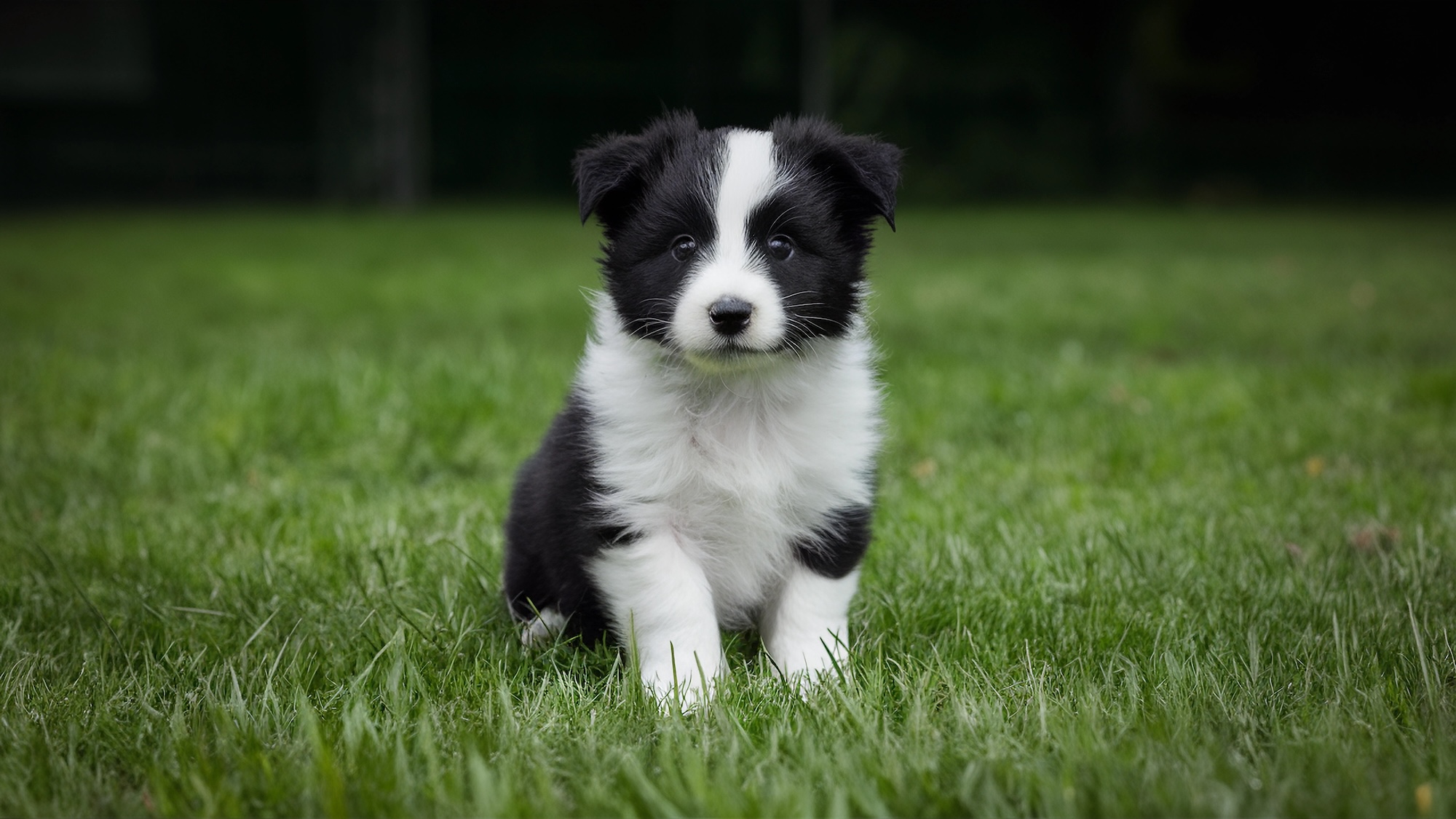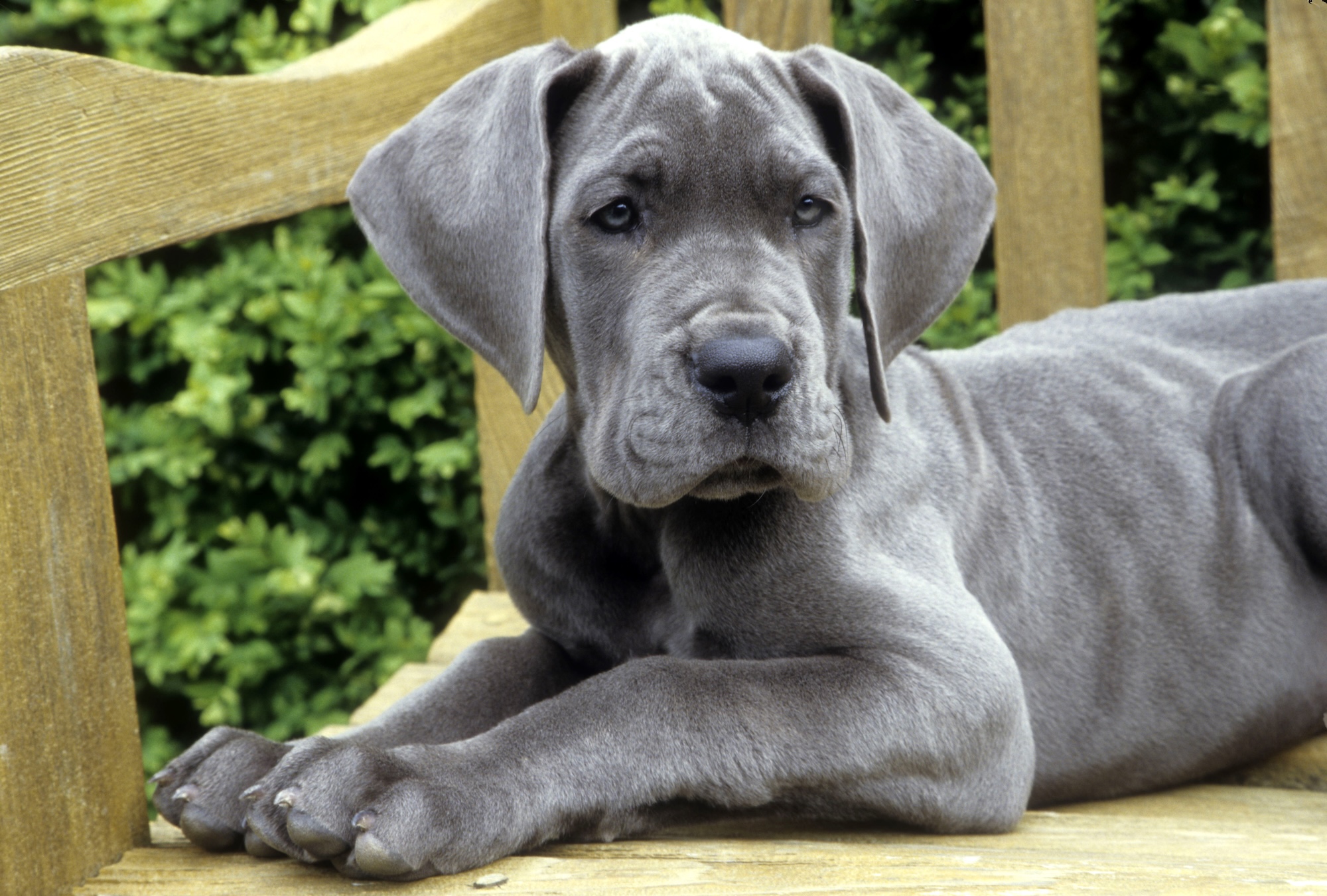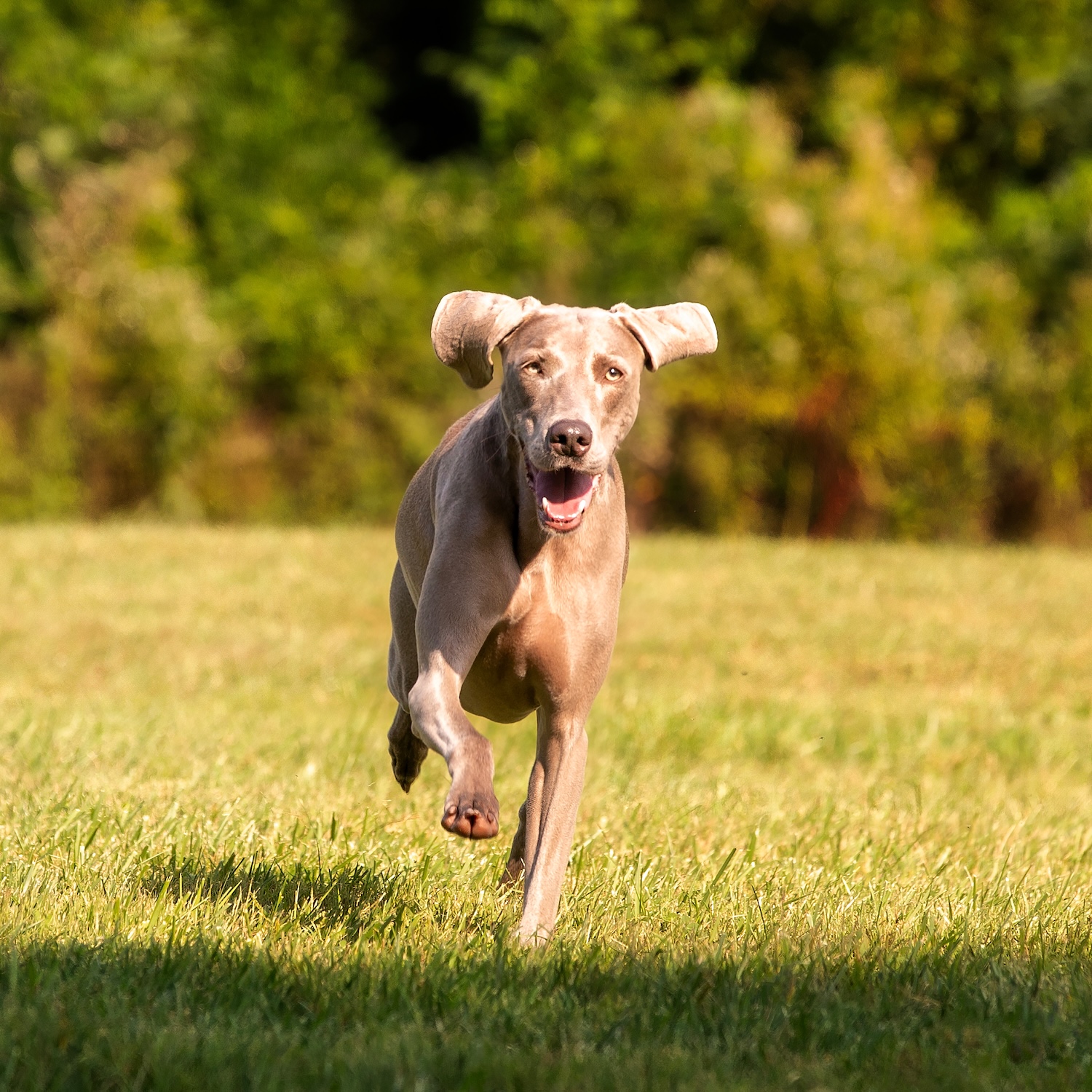Did you know that you should, ideally, brush your dog’s teeth every day? For that matter, you know you should brush your dog’s teeth at all? If not, you aren’t alone—most people don’t spend a lot of time thinking about their dog’s oral health.
It turns out we should, though.
Dental disease is surprisingly common in dogs—over 80% of dogs suffer from it by the time they’re three years old. Veterinarians say it’s one of the most common health problems they treat. While the disease can escape notice in its early phase, it can have a serious impact on your dog’s health beyond their mouth and affect their overall quality of life. Canine periodontal disease causes pain, inflammation, infection, tooth decay, and when the bacteria gets into their bloodstream, it can even affect other organs like your dog’s heart, liver, and kidneys, notes Dr. Jamie Richardson, Medical Chief of Staff at Small Door Veterinary.
Signs of dental disease in dogs include: bad breath, visible tartar on their teeth, bleeding gums, or any sign of oral pain, including inability to chew, favoring one side of the mouth, or pawing at the mouth. If you notice any of these symptoms you should schedule an appointment with your vet.
Why brushing matters
Unfortunately there’s an enduring misconception that eating any kind of kibble will keep your dog’s teeth clean but this is NOT the case. In fact, starchy kibble is more likely to stick to your dog’s teeth and contribute to plaque build-up.
Additionally, Dr. Richardson advises that although there are a number of products on the market from treats to water additives that claim to prevent tooth disease in dogs, the best way to prevent this problem is to get in there and brush your dog’s teeth.
“Ideally, owners should brush their dogs’ teeth once every day!” says Dr. Richardson. “It doesn’t need to take a long time, just a couple of minutes is sufficient to get rid of the majority of bacteria.” When brushing your dog’s teeth it’s most important to concentrate on the visible outside of the tooth, not the inside or the top of the teeth, as this is the area where most plaque and tartar will build up. If you can’t manage to brush every day, aim for a few times a week.
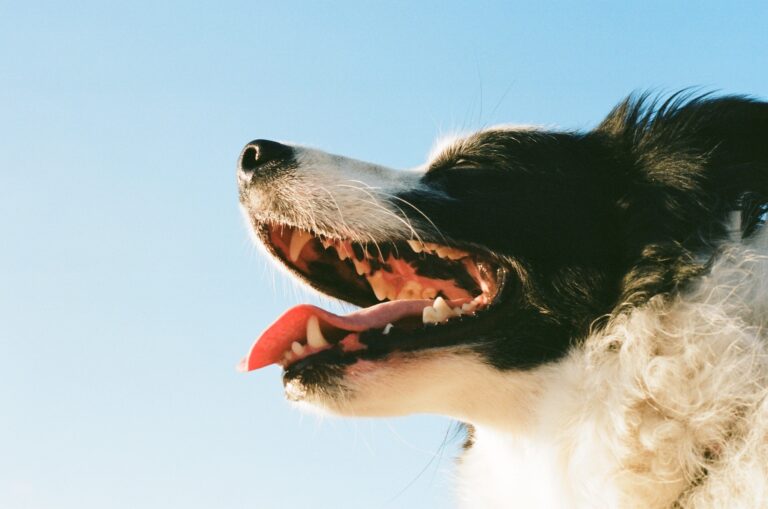
Prepare to brush: what you’ll need
For effective canine teeth brushing you’ll need a toothbrush designed for a dog—either a brush that fits over your finger or a long angled dog toothbrush. Then you’ll need toothpaste. Make sure that you get a toothpaste specifically for dogs that has your vet’s approval. Dog toothpaste comes in a variety of dog-attractive flavors. Toothpaste designed for humans not only won’t taste good to your dog it can actually be dangerous (and skip the baking soda, also not an acceptable option for dogs). Dr. Richardson notes that human toothpaste typically contains fluoride and often contains xylitol, both of which can be toxic to dogs. The attractive scent and flavor of the dog specific toothpaste will also encourage your dog to be enthusiastically involved in their new dental routine and view the whole thing as a treat.
Creating a routine
Starting a routine of brushing your dog’s teeth is, of course, easier with a younger dog. If you have a puppy at home incorporate hygiene and grooming—including tooth brushing, nail trimming and ear cleaning–into your puppy’s weekly routine so they become comfortable with it from a young age. An easy way to do this is to handle all parts of your puppy’s body including lifting their lips and putting your finger in their mouth and on their teeth while you are playing and cuddling. This will help your puppy to develop positive associations with being handled which will translate into being comfortable with tooth brushing.
Although it is easiest to get puppies into the routine of tooth brushing it’s something that, with a bit of counter-conditioning, can be done with dogs of any age. The goal is for your dog to develop a positive association with brushing. So start small—first touching your dog’s mouth and lifting their lips, then rubbing your finger on their upper teeth, all accompanied by praise and a healthy treat or two. The key, no matter the age of your dog or puppy, is to go slowly and at a pace your dog is comfortable with.
How To Brush Your Dog’s Teeth
Watch our video demonstration above, and read more about the steps below.
Step 1: Introduce Toothpaste
Let your dog take the lead with this process which will help build confidence and comfort. First let your dog sniff the toothpaste tube. Then put some of the toothpaste on your finger and allow your dog to explore, sniff, and lick the toothpaste off your finger as you praise your dog.
Step 2: Use Your Finger
When your dog is comfortably licking the toothpaste off your finger, put some toothpaste on your finger, lift your dog’s lip slightly and gently rub the toothpaste on your dog’s teeth, especially along the gumline. Don’t worry about getting all of your dog’s teeth. The idea at this stage is for your dog to be comfortable with your finger being in their mouth and touching their teeth.
Step 3: Build Consistency
Consistency is key to build your dog’s comfort with the tooth brushing process. Spend a couple of minutes each day rubbing each of your dog’s teeth with toothpaste on your finger. As your dog gets more comfortable with this process you should be able to gently move around your dog’s mouth. Gently lift your dog’s lips and rub against the teeth in all areas of your dog’s mouth. If at any point your dog seems nervous, uncomfortable by shying away from the brushing just go back a step or let your dog lick toothpaste off your finger and then reintroduce gently rubbing tooth areas your dog has been comfortable with before going to a new area.
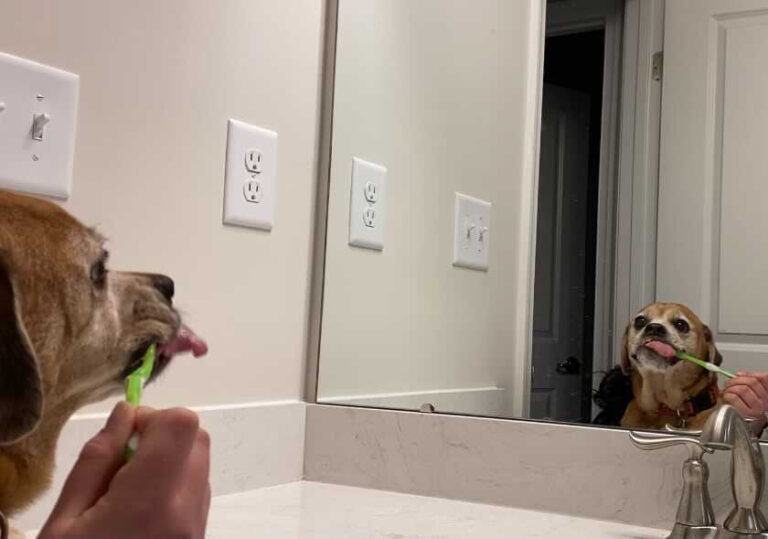
Step 4: Introduce a Toothbrush
Toothbrushes for dogs come in two main designs. The first is a rubber finger toothbrush that slides onto your finger and has bristles on the end. The second has a wand more like a human toothbrush. Some dogs are more comfortable with the finger version as it is more similar to the sensation of your finger rubbing their teeth/gums but select the toothbrush style that works best for you and your dog. Hold the toothbrush with some toothpaste on it and let your dog explore, sniff and lick the toothpaste off the brush.
Step 5: Brush!
When your dog is comfortable around the presence of the toothbrush, put more toothpaste on the brush, gently lift your dog’s upper lip on one side of their mouth and begin brushing in gentle circular motion. Concentrate first on brushing the canine teeth and the incisors. If you’ve made some progress with those, pause and praise and even offer a (tooth-friendly) treat. Then resume brushing, covering the cheek teeth (on the side of the mouth).
Keep it brief—these sessions should just be a minute or two so it doesn’t turn into an ordeal.
When your dog is first getting used to getting their teeth brushed it can help to do multiple short sessions during the day, or a few times a week. Don’t worry about trying to get your dog’s entire mouth brushed in one sitting. The goal is to end each tooth brushing session while your dog is still happy to participate and before they get stressed or try to move away. As you move your way around your dog’s mouth be sure to keep praising your dog!
Eventually, when you’re covering more of the mouth, be sure to get those back and bottom teeth. To reach the molars, don’t stretch the lip all the way back; instead lift the lip enough to slip the brush in, then let go of the lip and angle the brush toward the gums. Your dog may or may not come to love these sessions, but with patience and practice to maintain positive associations with training sessions, tooth brushing can become a stress-free, or even fun part of your dog’s daily routine.
Beyond the brush: dental care for every dog
Some dogs are more likely than others to have tooth issues and will need more careful monitoring and possible veterinary intervention. In particular, smaller breeds are often more predisposed to dental disease. This is because their smaller mouths have less space between the teeth (and often are overcrowded) and so harmful plaque and bacteria is able to build up faster, says Dr. Richardson. On the other hand, large breed dogs are more prone to tooth injuries. “Large dog breeds tend to suffer more from fractures and problems associated with chewing items that are too hard, simply because they tend to engage in more ‘super-chewer’ behavior than smaller dogs and their owners give them harder chew toys,” she says.
Regardless of size, dogs should have their teeth checked by a veterinarian at least annually.
And when it comes to feeding your dog for good dental health (and good breath!), the less processed, the better. Veterinarian Dr. Jonathan Block tells us, “I think improving (a dog’s) overall systemic health with a whole-food diet probably improves their microflora and promotes an overall healthier immune system, which will allow them to ward off things like dental infections and be able to tolerate them better.”
Photo by Cole Keister on Unsplash.



